Abnormal Event Detection Based on Trajectory Clustering
Fan Jiang, Ying Wu, and Aggelos K. KatsaggelosAbstract
In most scenarios of video surveillance, video events can be represented by the object trajectories and various features of the objects along time. The proposed abnormal video event detection method is based on unsupervised clustering of these object trajectories. The normal trajectory clusters are identified from clustering results and are modeled by hidden Markov models (HMM). Any trajectory that cannot be explained by those normal models is declared to be abnormal. The novelty of our proposed method includes a dynamic hierarchical process incorporated in the trajectory clustering algorithm: by iteratively reclassifying and retraining the trajectory groups at different clustering levels the HMM modeling is prevented from overfitting. In addition, by viewing the clustering process as a searching problem with the objective of minimizing the Bayesian information criterion (BIC), we have designed two searching strategies: 1-depth and 2-depth greedy searches. The computational complexity of the 2-depth search is analyzed and bounds on the trajectory dissimilarity are derived. The effectiveness and efficiency of our proposed method is demonstrated by experiments on real surveillance video. In particular, the 2-depth search strategy achieves better results than the 1-depth search, with comparable computational load.
Approach
The proposed abnormal event detection approach follows the common steps of the clustering-based approach. It includes two phases: training phase and testing phase, as shown in the system flowchart in Fig. 1. We assume that the object trajectories have been extracted from the training video, but without labels of abnormality. In the training phase, all trajectories {s} including both normal and abnormal ones are clustered into groups. Out of these groups, normal trajectory groups are identified and fitted with HMMs. In the testing phase, given any query trajectories q extracted from new video, decisions are made on whether they are abnormal or normal, based on the normal trajectory models.
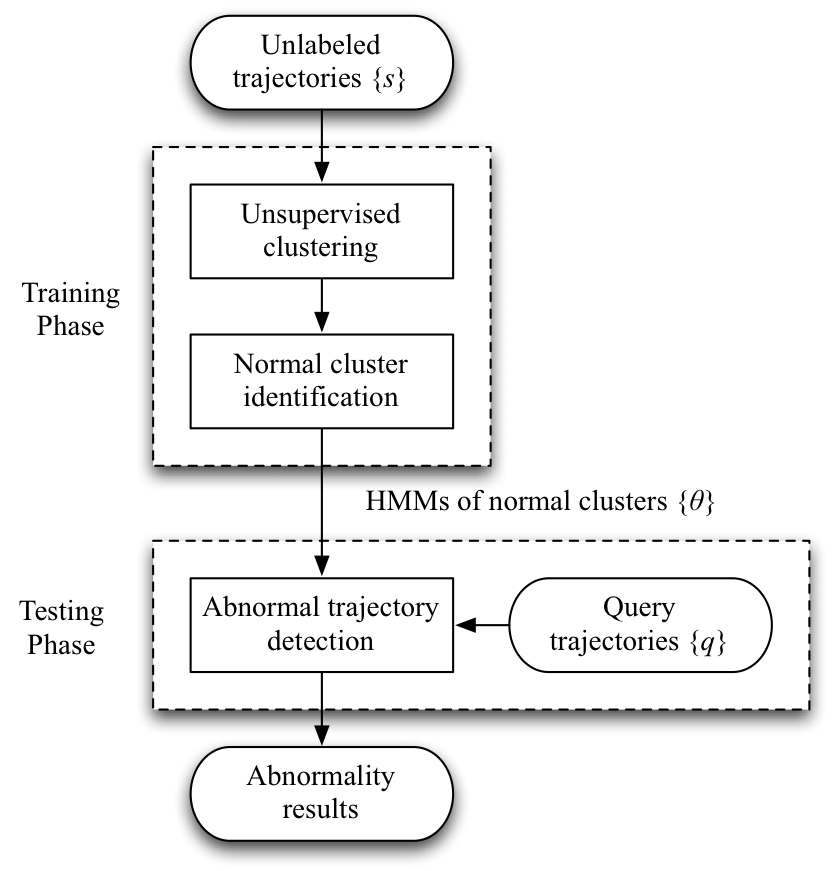
Figure 1. System Overview
Results
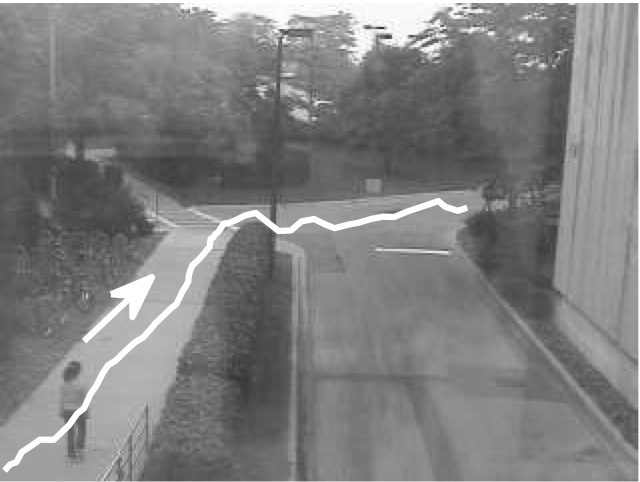
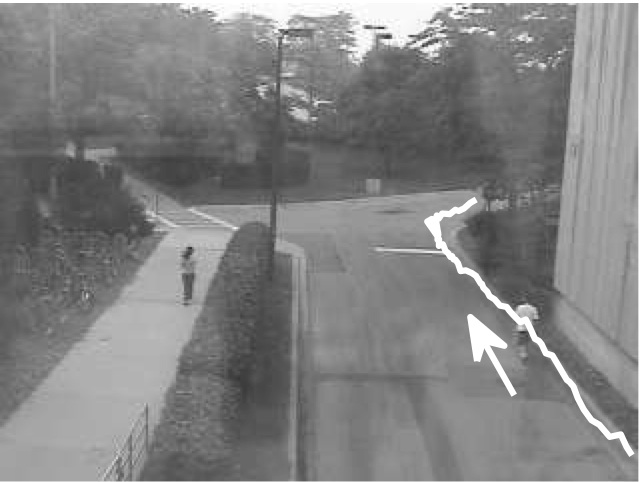
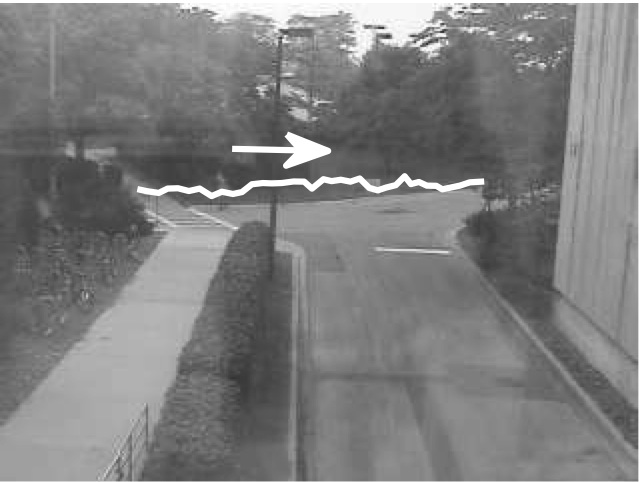
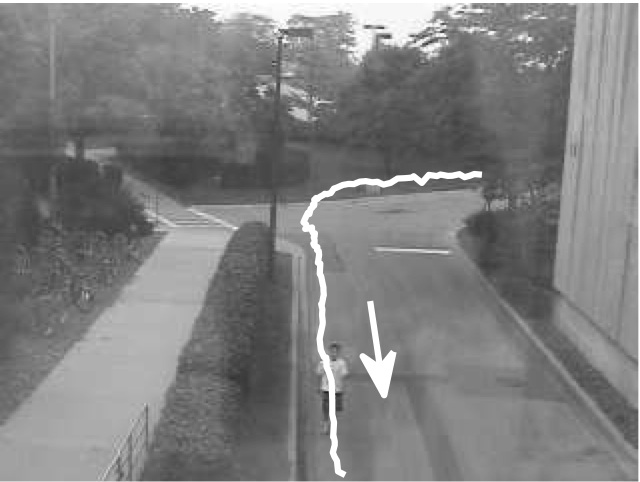
Figure 2. Example of normal trajectories

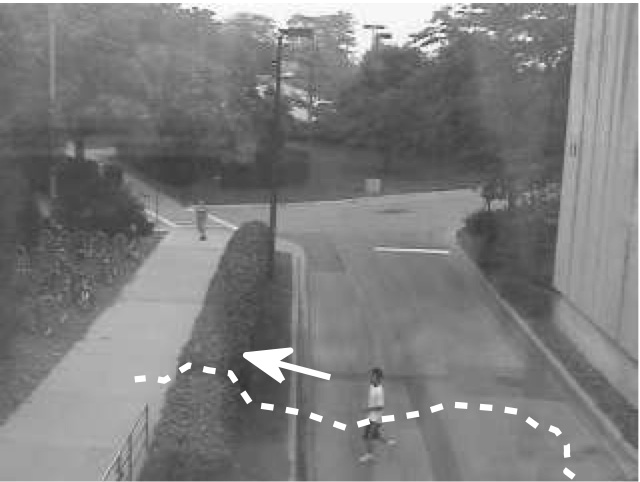
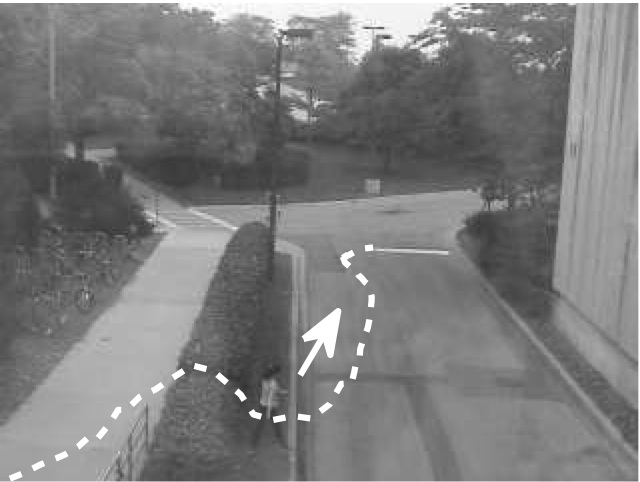
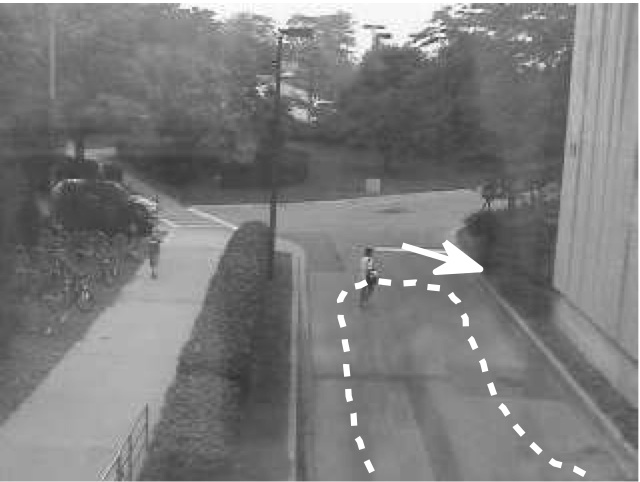
Figure 3. Example of abnormal trajectories
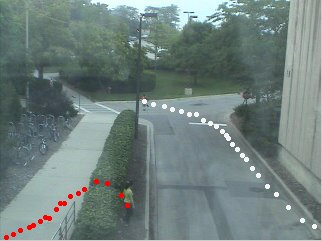
Video Demo: Normal trajectories (white) and abnormal trajectories (red)
Publications
- Fan Jiang, Ying Wu, and Aggelos K. Katsaggelos, "A Dynamic Hierarchical Clustering Method for Trajectory-Based Unusual Video Event Detection", IEEE Trans. Image Process., vol. 18, no. 4, pp. 907-913, 2009. [PDF]
- Fan Jiang, Ying Wu, and Aggelos K. Katsaggelos, "Abnormal Event Detection Based on Trajectory Clustering by 2-depth Greedy Search," in Proc. IEEE Int'l Conf. on Acoust., Speech, and Signal Process., pp. 2129-2132, Las Vegas, NV, Mar 2008. [PDF]
- Fan Jiang, Ying Wu, and Aggelos K. Katsaggelos, "Abnormal Event Detection from Surveillance Video by Dynamic Hierarchical Clustering," in Proc. IEEE Int'l Conf. on Image Process., vol. 5, pp. 145-148, San Antonio, TX, Sept 2007. [PDF]